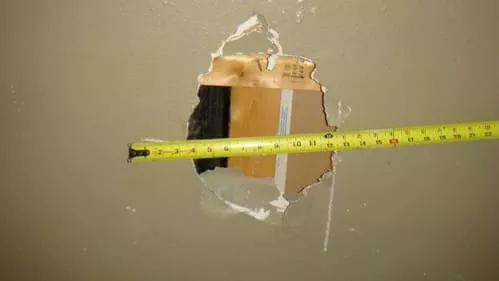Welcome to our step by step instructions on how to repair drywall!
While drywall is a robust and resilient surface, it is not indestructible. It is an undeniable fact that our walls are subjected to considerable wear and tear.
The deterioration of drywall may result from a number of factors, including the routine settlement of a house, the movement of furniture, the impact of nails, or even the result of a sudden emotional outburst. Regardless of the cause, it is inevitable that the walls of a residence will require some degree of maintenance and repair at some point.
One of the most common causes of damage to drywall is the use of doorknobs, which can result in dents and small holes in the surface. Furthermore, children can also be detrimental to the integrity of drywall. For instance, when the interior of a residence is erroneously perceived as a baseball stadium or demolition derby, it can result in unintended damage to the drywall.
A variety of factors can contribute to the deterioration of drywall, many of which are beyond our control.
However, there is no need for concern. One of the significant advantages of drywall is the simplicity with which it can be repaired. With the appropriate materials and tools, it is possible to repair a damaged wall to a standard that is comparable to that of a new wall.
The majority of repairs entail the use of fiberglass mesh drywall tape, drywall compound, a trowel (or drywall knife), and 150-grit sandpaper.
As the methodology for addressing minor drywall damage is contingent upon the extent of the issue, we have divided these procedures into discrete sections below.
The links below will direct the reader to detailed, step-by-step instructions for the repair of drywall, as well as lists of the necessary tools and materials for each task.

